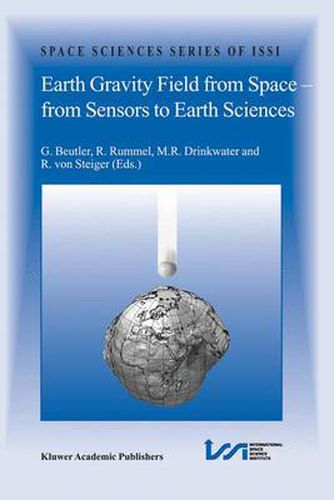Readings Newsletter
Become a Readings Member to make your shopping experience even easier.
Sign in or sign up for free!
You’re not far away from qualifying for FREE standard shipping within Australia
You’ve qualified for FREE standard shipping within Australia
The cart is loading…






This title is printed to order. This book may have been self-published. If so, we cannot guarantee the quality of the content. In the main most books will have gone through the editing process however some may not. We therefore suggest that you be aware of this before ordering this book. If in doubt check either the author or publisher’s details as we are unable to accept any returns unless they are faulty. Please contact us if you have any questions.
The ESA explorer core mission GOCE, to be launched in 2006, will enhance our knowledge of the global static gravity field and of the geoid by orders of magnitude. The US satellite gravity mission GRACE (2002-2006) is measuring, in addition, the temporal variations of the gravity field. With these new data a whole range of fascinating possibilities will be opened for solid Earth physics, oceanography, geodesy and sea-level research. The new generation of gravity missions employs sensor concepts for gravity field measurement, orbit and altitude control and orbit determination that show interesting similarities with space experiments planned in the field of fundamental physics. This volume is the result of a workshop that brought together some 50 acknowledged experts in their field to discuss (1) strategies for ultra precision orbit determination and gravity field modelling with the data of the upcoming gravity field missions, (2) the use of accurate and high resolution gravity models in Earth sciences whereby, in particular, synergy is expected between the various science fields in their use of this type of new information, and (3) gravity field requirements and possible sensor and mission concepts for the time after GRACE and GOCE.
$9.00 standard shipping within Australia
FREE standard shipping within Australia for orders over $100.00
Express & International shipping calculated at checkout
Stock availability can be subject to change without notice. We recommend calling the shop or contacting our online team to check availability of low stock items. Please see our Shopping Online page for more details.
This title is printed to order. This book may have been self-published. If so, we cannot guarantee the quality of the content. In the main most books will have gone through the editing process however some may not. We therefore suggest that you be aware of this before ordering this book. If in doubt check either the author or publisher’s details as we are unable to accept any returns unless they are faulty. Please contact us if you have any questions.
The ESA explorer core mission GOCE, to be launched in 2006, will enhance our knowledge of the global static gravity field and of the geoid by orders of magnitude. The US satellite gravity mission GRACE (2002-2006) is measuring, in addition, the temporal variations of the gravity field. With these new data a whole range of fascinating possibilities will be opened for solid Earth physics, oceanography, geodesy and sea-level research. The new generation of gravity missions employs sensor concepts for gravity field measurement, orbit and altitude control and orbit determination that show interesting similarities with space experiments planned in the field of fundamental physics. This volume is the result of a workshop that brought together some 50 acknowledged experts in their field to discuss (1) strategies for ultra precision orbit determination and gravity field modelling with the data of the upcoming gravity field missions, (2) the use of accurate and high resolution gravity models in Earth sciences whereby, in particular, synergy is expected between the various science fields in their use of this type of new information, and (3) gravity field requirements and possible sensor and mission concepts for the time after GRACE and GOCE.